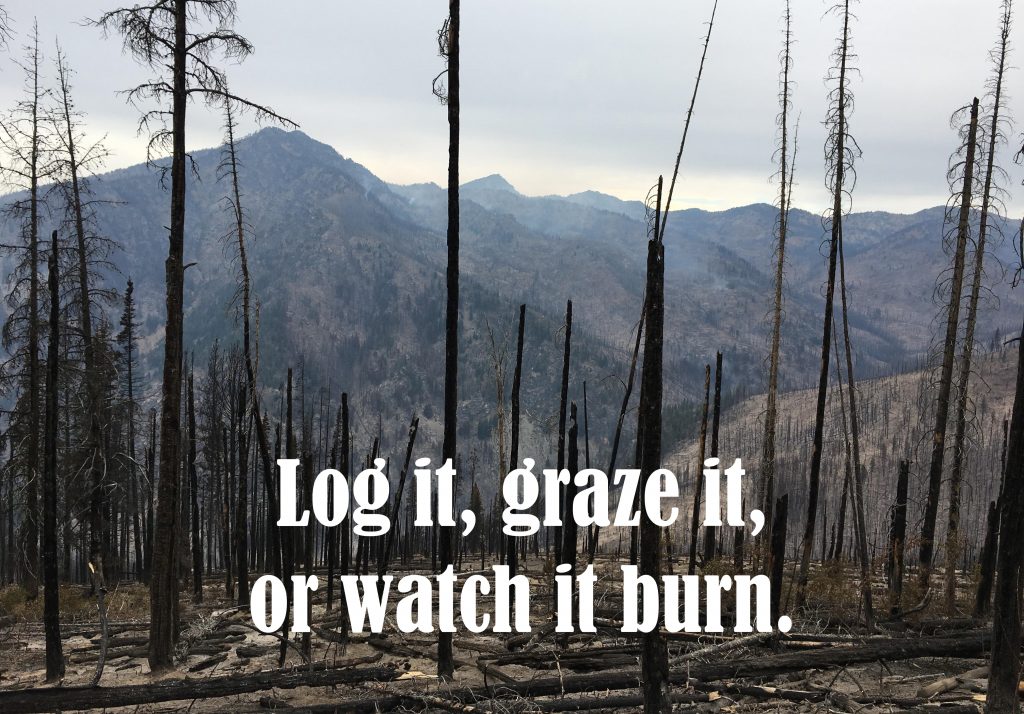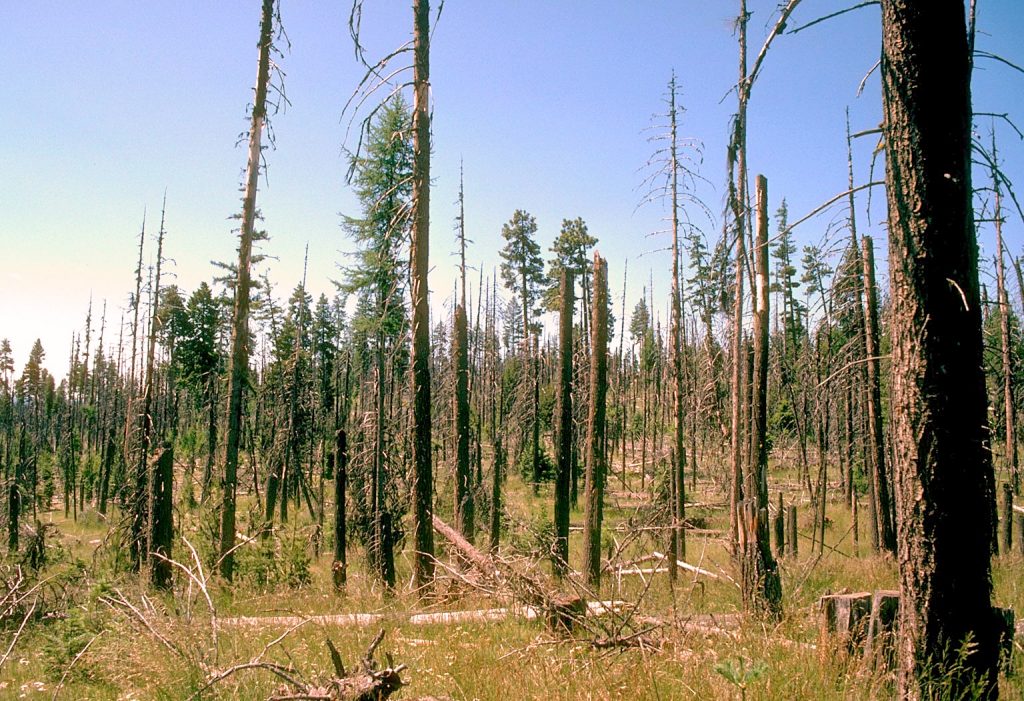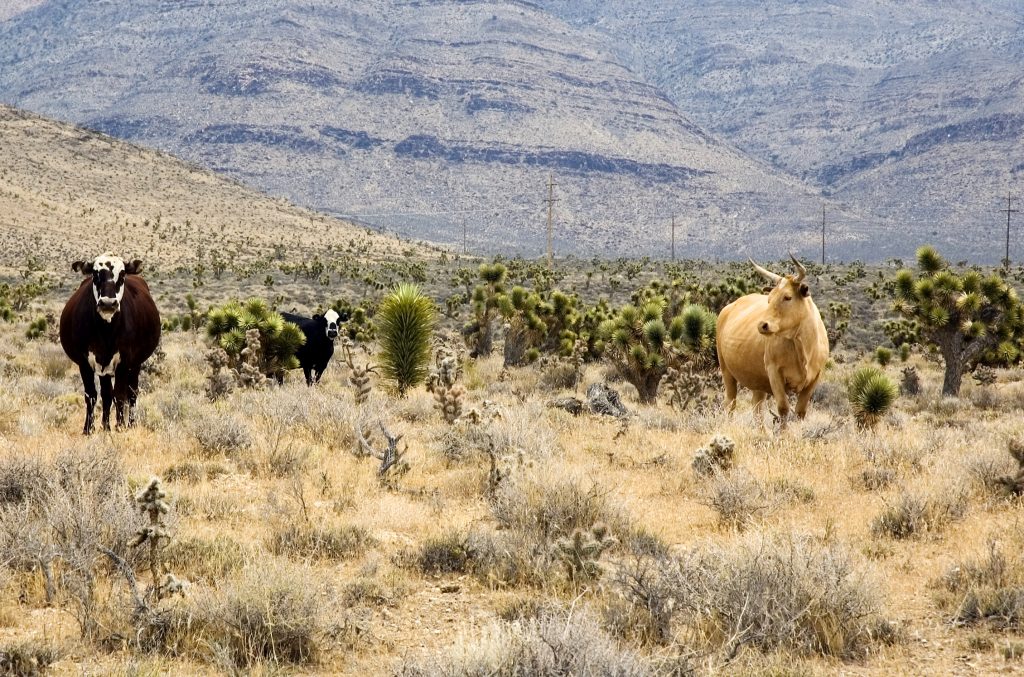This year-to-date, 47,700 wildfires have burned 8 million acres across the country, with the majority of the devastation in the states of California and Montana. High-profile fires in Yosemite and Glacier National Parks have caught national headlines, however millions of acres of forest and grassland have burned in recent months.
Information available on the Department of Interior website, posted by Marjorie Haun
The Interior Department issued a press release on September 12 in response to this year’s catastrophic–and ongoing–wildfire season. Secretary Ryan Zinke emphasizes the Trump Administration’s ‘turn from the past’ from politically-driven policies to proactive wildfire management which will include more ‘aggressive’ fuel reduction efforts. Secretary Zinke also noted that the ‘new normal’ attitude within some federal agencies and the environmentalist movement that ‘it’s better to let them burn’ is unacceptable, and that new solutions for public lands management are needed to reverse the trend of increasingly large and destructive wildfires. Noting that in 2017, iconic national parks have been dramatically impacted, the press release states:
This year-to-date, 47,700 wildfires have burned 8 million acres across the country, with the majority of the devastation in the states of California and Montana. High-profile fires in Yosemite and Glacier National Parks have caught national headlines, however millions of acres of forest and grassland have burned in recent months.
For several decades, forests and other federally-managed lands have suffered due to obstructionist litigation, primarily brought by environmentalist groups which have halted logging and clearing projects. Although some of those projects have been commercial, others have been for wildfire mitigation. But in many instances, timber sales as well as clearing projects were stopped in the courts, with the premise that critical wildlife habitat, or watersheds would be endangered. Federal permitting processes have also complicated and delayed fuels-reduction efforts. Comments from wildfire experts and elected leaders echoing Zinke’s philosophical change of direction are included in the DoI’s announcement:
•Bryan Rice, Director of the Office of Wildland Fire: “It is critical to fully consider the benefits of fuels reduction in the everyday management activities that we carry out for our public land management objectives, such as clearing along roadsides, around visitor use areas like campgrounds and trails, near employee housing areas, and within administrative site areas subject to wildfire.”
•Senator Lisa Murkowski, Chairman of the Senate Energy and Natural Resources Committee: “Treating our landscapes mitigates wildfire risk, increases firefighter safety, and makes our forests and rangelands healthy and resilient. We can no longer delay the implementation of this important work.”
House Natural Resources Chairman Rob Bishop: “We must ensure our land management agencies have the tools and resources they need to protect communities and landscapes from catastrophic wildfire. Over the long term, Congress and the Administration must work together to reverse the sorry state of our federal forests and grasslands…”
Montana Senator Steve Daines: “If we don’t start managing our forests, the forests are going to start managing us…”
Idaho Senator James Risch: “I applaud Secretary Zinke’s effort to thin the threat. If we can reduce the fuel loads in our forests and rangelands we will provide our fire fighters more defensible space to do their jobs. We need bold actions like this not just for the hurricanes in the south and east but also to avert the devastation caused by the wildfires in the west.”
Below are highlights from Secretary Zinke’s Wildland Fire Directive:
•Federal agencies will increase coordination with state and local partners, including local fire chiefs and county officials.
•Accumulated vegetation increases fuel loads and leads to larger, hotter fires. Fuels reduction management will be integrated into all public lands management.
•National parks, refuge, and district managers need to address wildfire threats early in the season, incorporating fuels reduction into resource management planning.
•A key strategy in protecting landscapes, communities, structures, vistas, historic objects, visitors centers, citizens and firefighters across all jurisdictions, will be to address vegetation composition and structure, and alter fuel loads to reduce hazards.
•All public lands management activities will address the threat of fire, and all managers, not only fire staff, will participate. “Where dead and dying trees have become hazards that can carry fire across our boundaries or into areas that are a threat to values-at-risk, we must move aggressively to minimize that threat.”
•If necessary, fuels reduction projects will be contracted out to private sector companies.
•Encroaching and overgrown vegetation along roadsides and in ditches will be cleared.
•Department level managers will review and identify resources needs and data gaps, and will bring fire management plans up to date to “include the identified needs for a robust fuels management program…”
•”I ask you to do the following: 1) use our existing policies more aggressively; 2) think differently about how those policies may be applied; 3) look for opportunities to partner with adjacent agencies, state and local governments, tribes, and private landowners to maximize resources; 4) look carefully at your existing management plans and ask if you are doing all you can today to address the threats of tomorrow; and 5) ensure that our landscapes are restored and maintained to meet our mission.”
•’Business as usual’ is unrealistic in public lands management. “We must do everything we can to address the steady accumulation of fuels on our Nation’s public lands and the resulting increased threats from catastrophic wildfires.”
The axiom, ‘Log it, graze it, or watch it burn,’ is basic to wildfire management. Logging and thinning of trees, and livestock grazing, though controversial to some, are increasingly accepted as essential to healthy forests and vibrant public lands. With records being set each year in the numbers of acres burned, intensity, and economic and human costs of wildfires on America’s public lands, this serious-minded change in strategy by the Interior and Agriculture Departments, could mean that in the near future, dangerous trends in wildfire activity will be reversed.

[paypal_donation_button]
[wp_ad_camp_3]
[wp_ad_camp_2]



